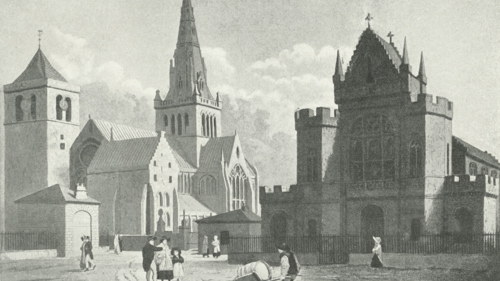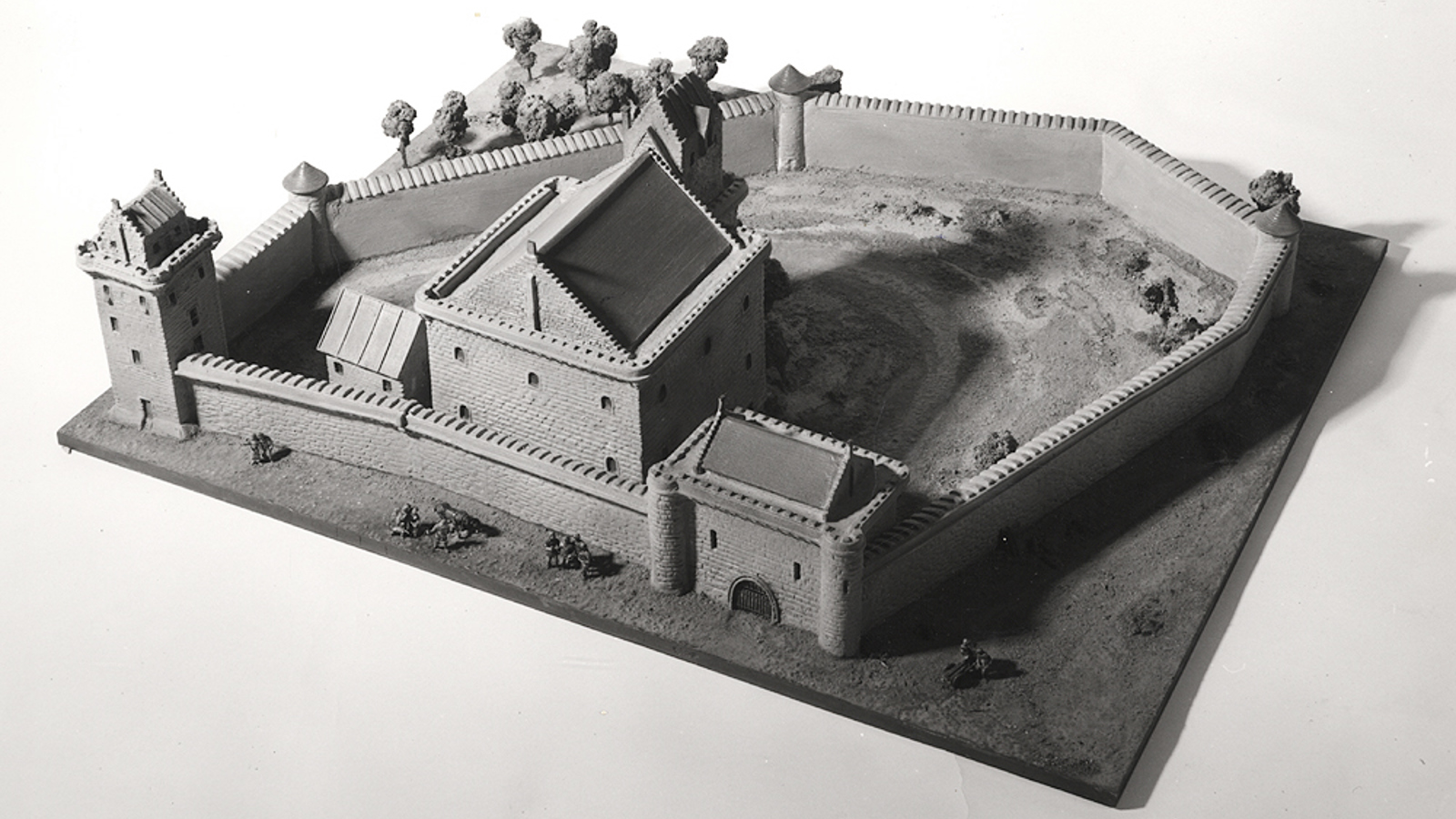Bishop's Castle - Times Past

In partnership with the Glasgow Times, our archivists are exploring Glasgow's fascinating history. This week, Irene O'Brien writes about the Bishop's Castle.
The diocese and township of Glasgow existed before Glasgow became a Burgh. When it was founded in 1175, Glasgow was a Bishop’s and not a Royal Burgh and it was the Bishops who were responsible for its administration. The centre of the Bishop’s secular power was the Bishop’s Castle or Bishop’s Palace, as it was also known. It also served as the residence of the bishops and archbishops of Glasgow until the Reformation in 1560, when the last Catholic archbishop, James Beaton, fled to France.
Bishop’s Castle was situated south-west of Glasgow Cathedral. It covered what is now Cathedral Square. The present-day St Mungo Museum occupies the western end of the original castle site and incorporates some of its remains.
The first fortifications were probably erected on the site in the 12th century and subsequently improved and extended by Glasgow’s bishops over the centuries. The central tall, fortified tower which became the heart of the complex was there by 1258. It provided a place of sanctuary for successive bishops and archbishops, who resided there. This led to it acquiring the alternative name, the Bishop’s Palace.
The castle was the burgh’s main defence; its defensive nature was reinforced by a moat and the drawbridge entrance to the north. A Great Tower was erected by Bishop Cameron at the south west corner in the 1430s. In the early 16th century, the whole complex was surrounded by 15 feet to 20 feet (5 -6 metres) stout stone wall which replaced an earlier timber fence. In 1544 a magnificent gatehouse was built in the south east corner by Archbishop Dunbar. The castle had assumed its final appearance by the late middle ages.
The castle was stormed and looted in 1516/17 and 1544. It was largely neglected after the departure of the Roman Catholic hierarchy from Glasgow in 1560. Nevertheless, it was garrisoned in 1570 when it was besieged by forces loyal to Mary, Queen of Scots. It was in ruins by the middle of the 16th century. Archbishop Spottiswoode ordered its restoration in 1611, but when Daniel Defoe visited the town in 1689, he found the building derelict.
By the 18th century it had become little more than a quarry for builders, who demolished walls and removed stones to use in the construction of new buildings in the city. The ruins were entirely removed in 1792, when work began to build the new Glasgow Royal Infirmary on the site. Bishop’s Castle is largely remembered today only in the name of Castle Street.
The Bishop's Castle was reconstructed, temporarily, on the north bank of the River Kelvin in Kelvingrove Park for the International Exhibition of 1888. The reconstruction was impressively realistic, and visitors were surprised to discover that it was made of painted canvas on a wooden frame.
How much better it would have been if Glasgow’s great early medieval Castle and Palace had been preserved so that both its citizens and visitors to the city could have experienced first-hand this jewel in the crown of Glasgow’s great medieval history.

